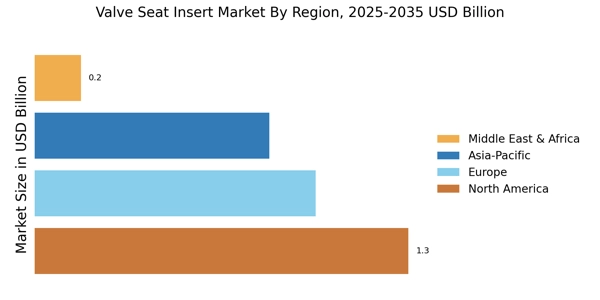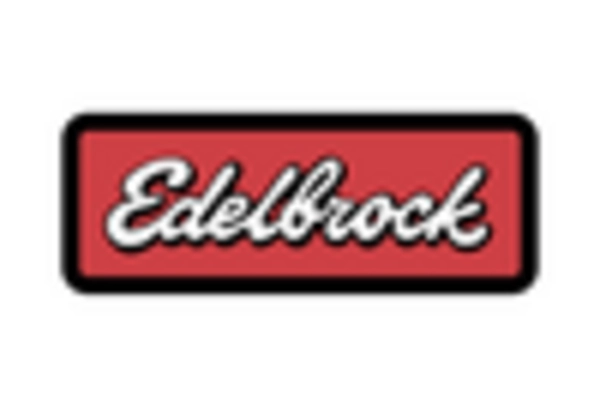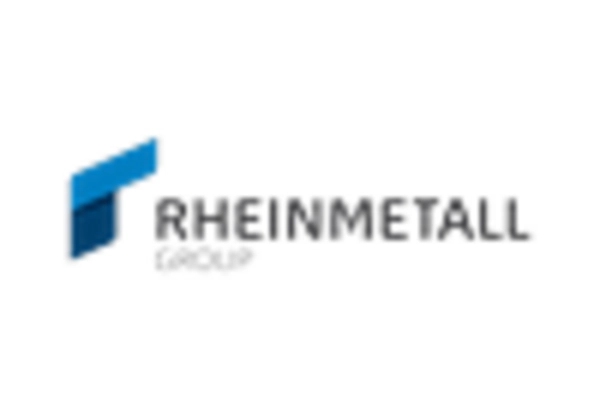Expansion of the Aerospace Sector
The Valve Seat Insert Market is poised for growth due to the expansion of the aerospace sector. As air travel continues to increase, there is a corresponding demand for more efficient and reliable aircraft engines. Valve seat inserts are integral components in these engines, contributing to their overall performance and reliability. Recent data indicates that the aerospace industry is projected to grow at a compound annual growth rate of around 4% over the next decade. This growth is likely to drive demand for high-quality valve seat inserts, as manufacturers seek to enhance engine performance and reduce maintenance costs. The expansion of the aerospace sector presents a significant opportunity for the Valve Seat Insert Market, as it aligns with the need for advanced materials and technologies in engine design.
Increasing Focus on Fuel Efficiency
In the context of the Valve Seat Insert Market, the increasing focus on fuel efficiency is a critical driver. As regulatory bodies impose stricter emissions standards, automotive manufacturers are under pressure to develop engines that consume less fuel while maintaining performance. This has led to innovations in valve seat insert designs, which play a crucial role in optimizing combustion efficiency. Data suggests that vehicles equipped with advanced valve seat inserts can achieve up to 10% better fuel efficiency compared to traditional designs. Consequently, the demand for high-quality valve seat inserts is expected to rise, as manufacturers seek to comply with regulations and meet consumer preferences for environmentally friendly vehicles. This trend is likely to bolster the growth of the Valve Seat Insert Market in the coming years.
Growth of the Automotive Aftermarket
The growth of the automotive aftermarket is a significant driver for the Valve Seat Insert Market. As vehicles age, the demand for replacement parts, including valve seat inserts, increases. This trend is particularly pronounced in regions with a high number of older vehicles still in operation. Data indicates that the automotive aftermarket is expected to grow at a compound annual growth rate of approximately 6% over the next few years. This growth is likely to be fueled by the increasing number of vehicles on the road and the rising consumer preference for maintaining and upgrading existing vehicles rather than purchasing new ones. Consequently, the Valve Seat Insert Market stands to benefit from this trend, as aftermarket suppliers seek to provide high-quality replacement parts to meet consumer needs.
Rising Demand for High-Performance Engines
The Valve Seat Insert Market is experiencing a notable increase in demand for high-performance engines, particularly in the automotive sector. As consumers seek enhanced vehicle performance, manufacturers are compelled to innovate and improve engine efficiency. This trend is reflected in the growing adoption of advanced materials and technologies that enhance the durability and performance of valve seat inserts. According to recent data, the automotive sector accounts for a substantial share of the valve seat insert market, with projections indicating a compound annual growth rate of approximately 5% over the next few years. This rising demand for high-performance engines is likely to drive the growth of the Valve Seat Insert Market, as manufacturers strive to meet consumer expectations for speed, efficiency, and reliability.
Technological Innovations in Manufacturing Processes
Technological innovations in manufacturing processes are significantly influencing the Valve Seat Insert Market. Advances in production techniques, such as precision machining and additive manufacturing, are enabling manufacturers to produce valve seat inserts with greater accuracy and efficiency. These innovations not only reduce production costs but also enhance the performance characteristics of the inserts. For instance, the implementation of computer numerical control (CNC) machining has improved the consistency and quality of valve seat inserts, leading to better engine performance. As manufacturers adopt these advanced manufacturing technologies, the Valve Seat Insert Market is likely to witness increased competition and product differentiation, ultimately benefiting consumers through improved product offerings.


















Leave a Comment